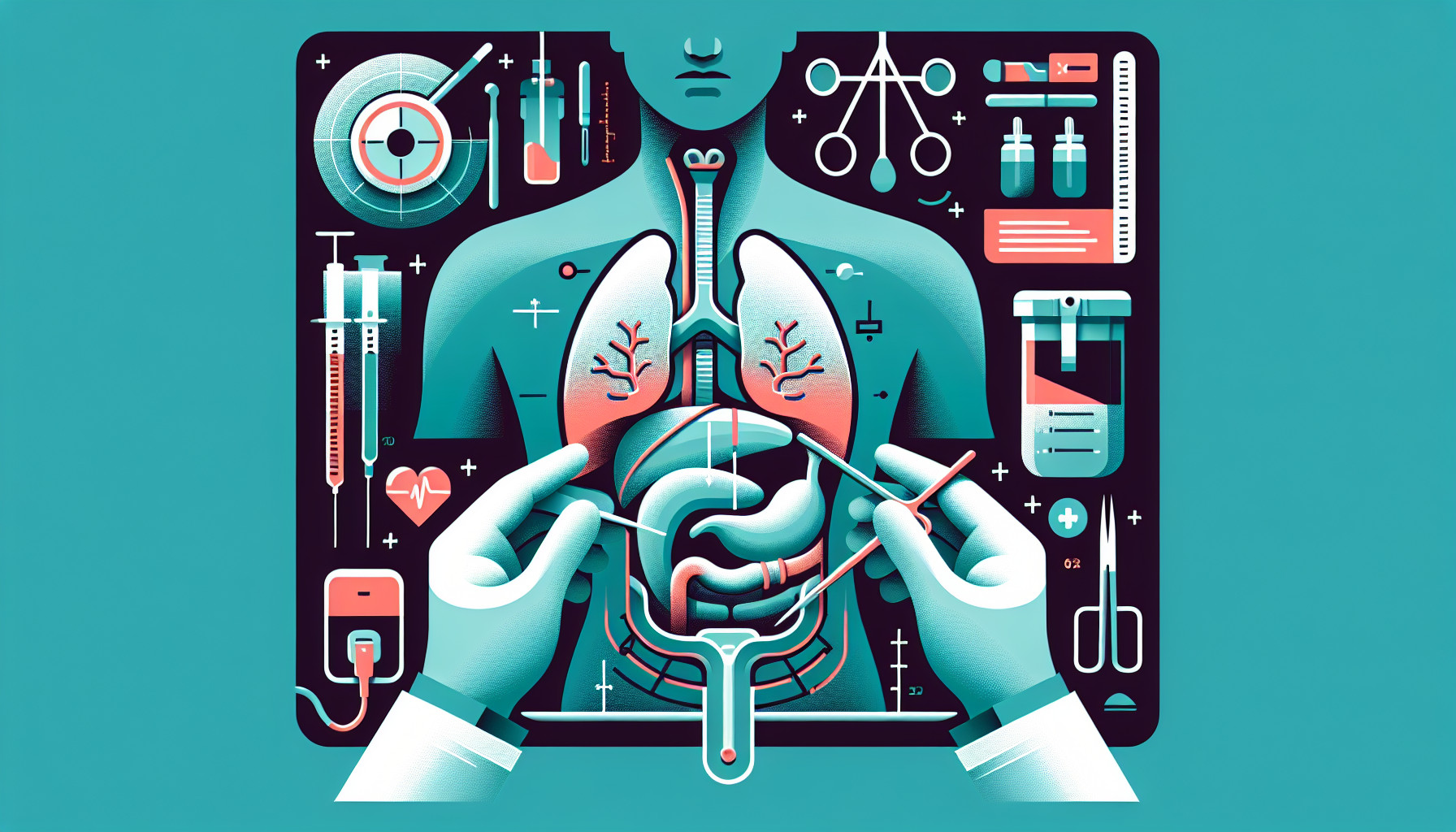Our Summary
This paper discusses how a combined pancreas-kidney transplant can be a treatment option for patients with type 1 diabetes. This procedure can help to regulate blood sugar levels, reduce the need for insulin, prevent kidney disease related to diabetes, and improve patients’ quality of life.
The paper highlights the importance of imaging (essentially taking detailed pictures) to check how well the transplanted organs are functioning. Ultrasound with Doppler is the first choice for this, as it can assess the transplant and spot any complications that may arise.
If a patient’s kidney function is reduced, a non-contrast MRI is preferred over a non-contrast CT scan to check for complications. However, a contrast-enhanced CT/MRI may be used if there’s a strong suspicion of transplant dysfunction.
Catheter angiography, another imaging technique, is mainly used for treatment rather than diagnosis, particularly for blood vessel complications. Understanding the surgical procedures and what a healthy transplant looks like on imaging can help to identify potential problems and manage them promptly. The article provides an overview of surgical techniques, what normal and abnormal transplants look like on imaging, and potential complications.
FAQs
- What is the purpose of a simultaneous pancreas-kidney transplant?
- What imaging techniques are used to evaluate the condition of a pancreas-kidney transplant?
- When is catheter angiography used in the context of pancreas-kidney transplants?
Doctor’s Tip
A helpful tip a doctor might tell a patient about pancreas transplant is to regularly undergo imaging tests such as ultrasound with Doppler, noncontrast MR imaging, and potentially contrast-enhanced CT/MR imaging to assess the health of the transplant graft and detect any complications early on. It is important to stay proactive in monitoring the transplant to ensure its long-term success and function.
Suitable For
Patients who are typically recommended for pancreas transplant include those with insulin-dependent diabetes mellitus type 1 who have not responded well to other treatments, such as insulin therapy and oral medications. These patients may also have complications such as diabetic nephropathy, which can lead to kidney failure. The goal of the transplant is to restore normoglycemia, alleviate insulin dependency, and improve quality of life. Imaging plays a critical role in the assessment of pancreas-kidney transplants, with ultrasound with Doppler being the primary modality for evaluating graft function and detecting complications. Non-contrast MRI is preferred over non-contrast CT for patients with decreased renal function, although contrast-enhanced imaging may be obtained in certain cases. Catheter angiography is reserved for therapeutic intervention in suspected vascular complications. Understanding the surgical techniques and normal imaging appearance of a pancreas-kidney transplant is essential for identifying potential complications and guiding timely management.
Timeline
Before pancreas transplant:
- Patient is diagnosed with insulin-dependent diabetes mellitus type 1
- Patient undergoes evaluation for transplant candidacy, including medical history, physical examination, and laboratory tests
- Patient is placed on a waiting list for a suitable donor pancreas
- Patient may undergo dialysis for diabetic nephropathy if necessary
After pancreas transplant:
- Patient undergoes surgery to receive a pancreas transplant, often in conjunction with a kidney transplant
- Patient is closely monitored in the hospital for signs of rejection or complications
- Patient may need to take immunosuppressant medications to prevent rejection of the transplant
- Patient undergoes follow-up appointments and imaging studies to monitor the function of the transplanted pancreas and kidney
- Patient experiences improved quality of life with restored normoglycemia and reduced insulin dependency.
What to Ask Your Doctor
- What is the success rate of pancreas transplant surgery?
- What are the potential risks and complications associated with pancreas transplant surgery?
- How long is the recovery process after pancreas transplant surgery?
- What medications will I need to take after the transplant and what are the potential side effects?
- How often will I need to follow up with my transplant team after the surgery?
- What lifestyle changes will I need to make after the transplant?
- How will the transplant affect my diabetes management and insulin dependency?
- How will the transplant affect my kidney function?
- What signs or symptoms should I watch for that may indicate rejection or complications with the transplant?
- Are there any restrictions on activities or diet that I should be aware of after the transplant?
Reference
Authors: Wasnik AP, Aslam AA, Millet JD, Pandya A, Bude RO. Journal: Clin Imaging. 2021 Jan;69:185-195. doi: 10.1016/j.clinimag.2020.07.028. Epub 2020 Jul 29. PMID: 32866771
